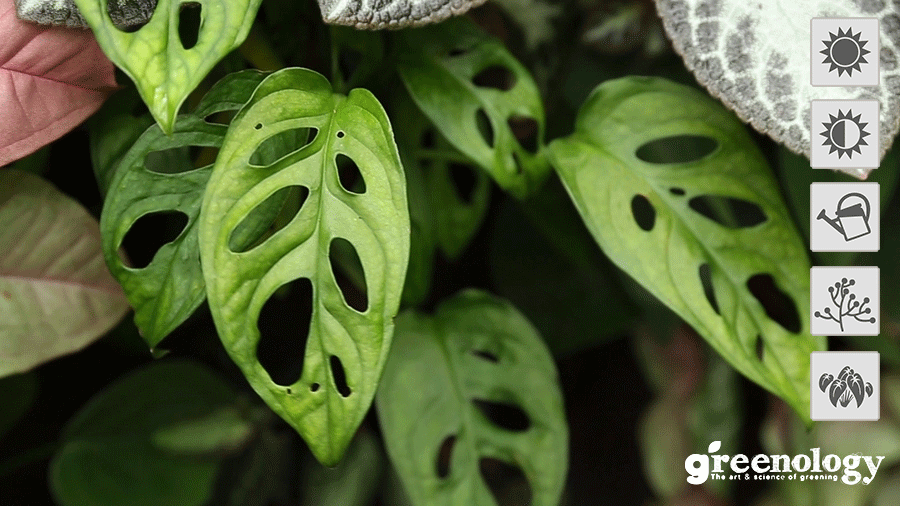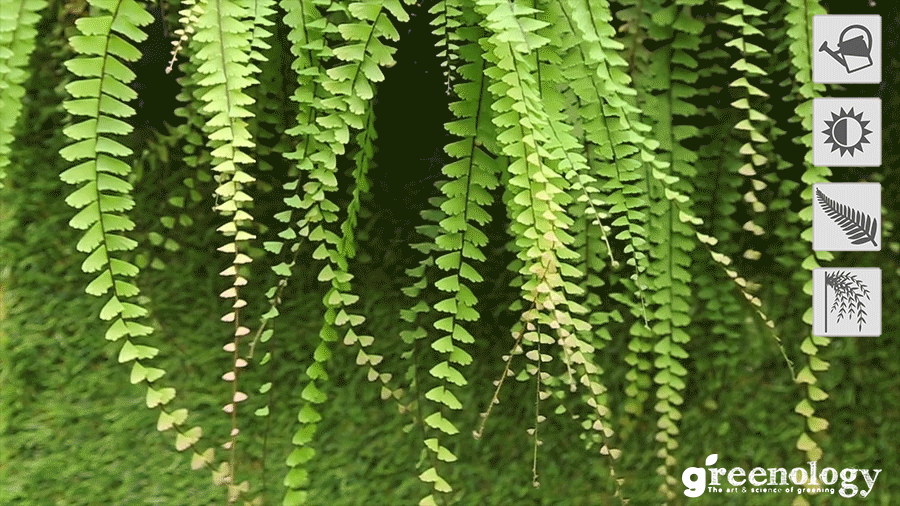This is a series of blogs to create awareness about the benefits of plants, and greenery in general. We’ll introduce three species at a time, and highlight interesting facts about each plant. All of these plants are part of the more than 600 species we grow at Greenology, and use successfully in our Vertical Greenery panels.
If you grow any of these plants at home, or are thinking of doing so, we have this handy guide for plant care that you can refer to:

Monstera genus
As visitors stroll along our nursery, a certain plant species would often turn heads and make them go, ‘Oh no, insects have eaten through the leaves of this plant!’ But do not be mistaken. Naturally formed and part of healthy development, the holes in the leaves of the Monstera obliqua prevent the plant from being ripped by strong winds in the upper canopies. They also let rain pass through more quickly while allowing more light to reach foliage below. Relatively easy to maintain with partial sunlight, the Monstera obliqua is a popular choice that lends our green walls an exotic touch.

Adiantum genus
Characterised by its black-stemmed fronds and fan-like plantlets, the Adiantum peruvianum is a plant that stands out from the crowd when put on a green wall. In our designs, we try to inject character into a green wall by considering the growth pattern of each plant species. With its delicate cascading foliage, the A. peruvianum reacts easily to the winds to bring any green wall alive.
The genus name is derived from the Greek word adiantos which means unwetted, in reference to the water-repelling properties of the fern’s fan-like foliage. In the wild, the A. peruvianum is native to some parts of South America so like most ferns of tropical origin, it grows most splendidly under cool, shady surroundings with evenly-moist media.

Pitcher Plant
Most of us have heard about the pitcher plant. In the wild, this carnivorous species can be found growing in nitrogen-poor soil and semi-shaded environments. It is most identifiable by its modified leaves called the pitfall trap.
So how does the pitfall trap work? The trap releases sweet nectar within its cavity, which attracts small animals such as insects to crawl in. The cavity is smooth and slippery, and lined with fine hairs that point downwards, making it tricky for most insects to escape. Consequently, the insects are digested to provide extra nitrogen and other nutrients. On the top of the pitcher plant there is a little leaf call the operculum which acts like an umbrella to prevent water from entering the trap during heavy rain. Without the operculum, the excess rainwater will kill the plant.

LET’S CREATE LIVING ART!
The choice and combination of plant species matter to the sustainability of your green wall. Greenology will recommend plant species that are suitable to site conditions while considering your preferences for the aesthetics of a green wall. We have tested more than 600 species on our substrate-panel system which was designed and engineered to support plant health and growth. Speak to us to find out if we carry a certain plant species, or if you have questions about the Greenology Vertical Greenery (GVG) system!
